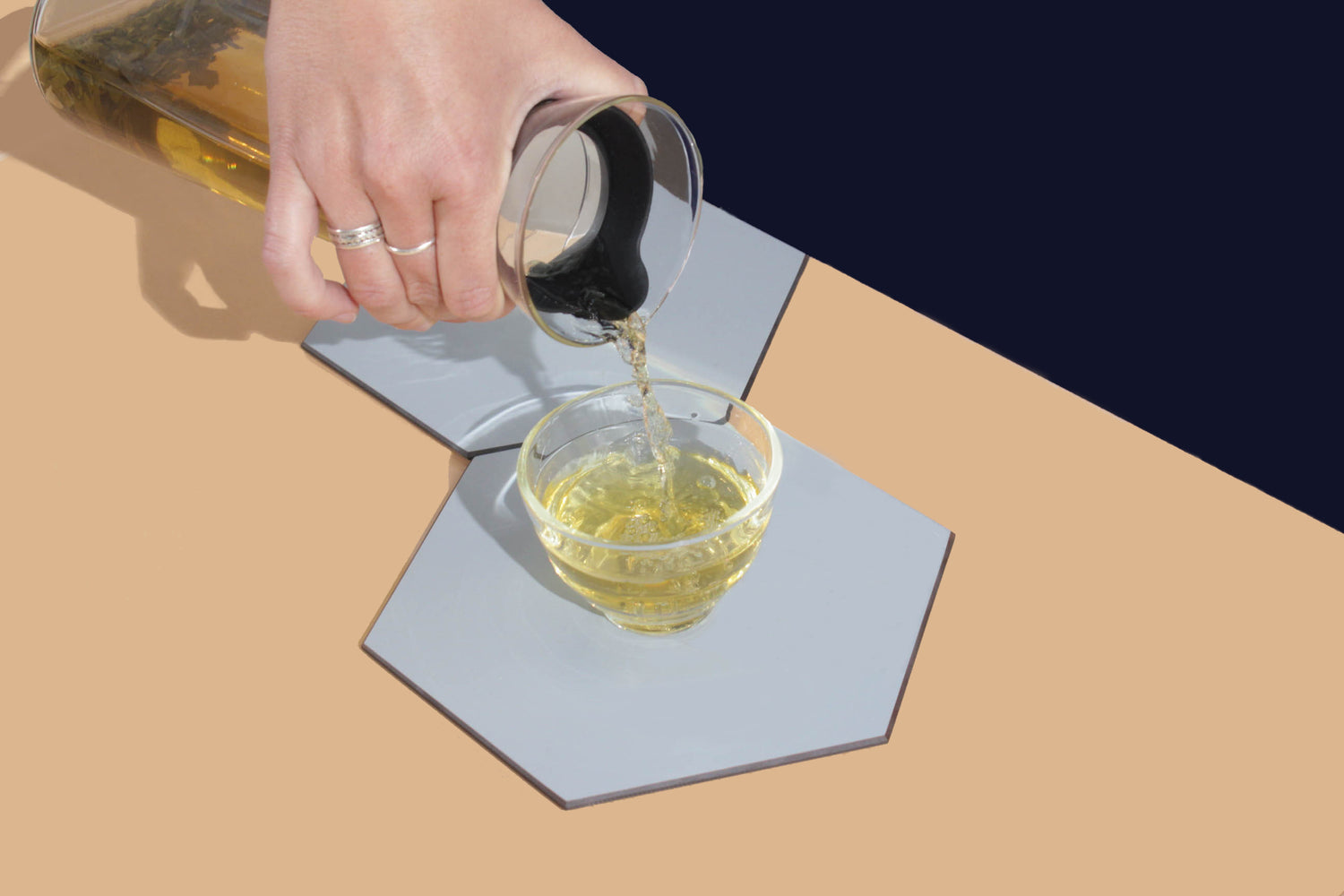Cold Brew Tea Recipe + Tips

’Tis the season for kicking back with cold caffeinated drinks! Now I like cold brew coffee just as much as the next person, but I think I almost enjoy iced tea more. Last summer I finally felt like I cracked the code on brewing delicious iced tea at home. I’ve been able to enjoy a wide range of tea styles from Chinese green, Taiwanese black, hibiscus, mint, Japanese senchas, and even ginger + citrus infusions! After a lot of trial and error, and trying many recipes, I’ve found one that works quite well with repeatable results. The best part about it is that you can re-steep your leaves two, three, and sometimes even four times! It can help to justify buying those pricier loose leaf teas, getting more bang for your buck. And I find that brewing it this way—over-night steeping in the fridge—often produces better-tasting tea than brewing hot. You get a nice depth of flavour, minimal bitterness, and a clean profile. It is far superior, in my opinion, than brewing hot and adding ice after which, even when the ratios are correct, usually lacks depth of flavour.
Brewing tea this way is best with loose teas. Cheap grocery store tea bags can work, but it typically ends up tasting dull and flat. This is not what we want! We want crisp, clean layers of flavour, and of course, a refreshing beverage. My favourite tea right now has been a Long Jing— this green tea comes from the Zhejiang Province of China, and is not considered rare; it should be easily available at your favourite loose leaf tea shop. I typically use a 1 quart mason jar, but the 750ml HARIO Filter in Bottle Cold Tea Brewer makes life easier with its built-in strainer and easy pouring neck. I haven’t experimented with many different water variations, but my home pitcher filter works well with a TDS of around 90. With tea, much like coffee, you need some minerals for proper extraction, and with distilled water or super soft water, it’s just not ideal. I also highly recommend giving your tea a rinse— for two reasons: Some tea plantations unfortunately use pesticides, and though I have no proof, I’d like to think that a quick soak / rinse helps to remove some of that residue (call me crazy, but I’m the kind of person who rinses their fruits/veggies before consuming them). Secondly, rinsing / soaking is also good for opening-up the leaves and allowing them to saturate faster, for a deeper extraction. (It works in a similar manner to discarding the first hot steep of certain teas, as it is usually the weakest, so that the second infusion of the leaves is stronger after they’ve unfurled and opened up.)
Bring it to work, share it with friends, or enjoy a few days worth of easy-drinking, crisp cold green tea!
Recipe
1 litre filtered water
12 grams of loose tea (otherwise, try the ratio of 1.2 grams of tea per 100ml of water)
- Add tea to vessel. Pour 5 cm’s of cold water over leaves, swirl for 30 seconds, discard water, repeat, or add 5cms of water and soak for 10 minutes, then discard water.
- Add 1000g of water as a starting point, adjust to taste for subsequent brews
- Place vessel in fridge and steep for 8 - 12hrs, again, adjusting to taste. If resulting brew is bitter, reduce steeping time by 1 - 2hrs.
- Strain out tea leaves (don’t forget to save them — you can place them in an air-tight container, and put them back in the fridge for the next brew. They will lose strength after each brew, so mileage will vary.)
- Place remaining tea back in fridge. Provided it is air tight and kept cool, the tea should be good for up to two days.
- optional: sweeten to taste with a simple syrup





